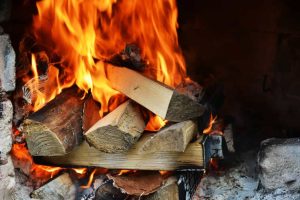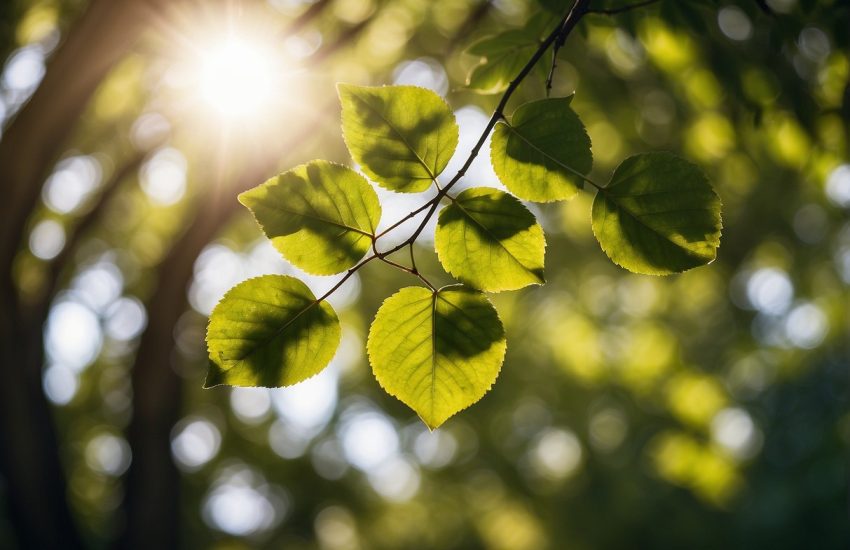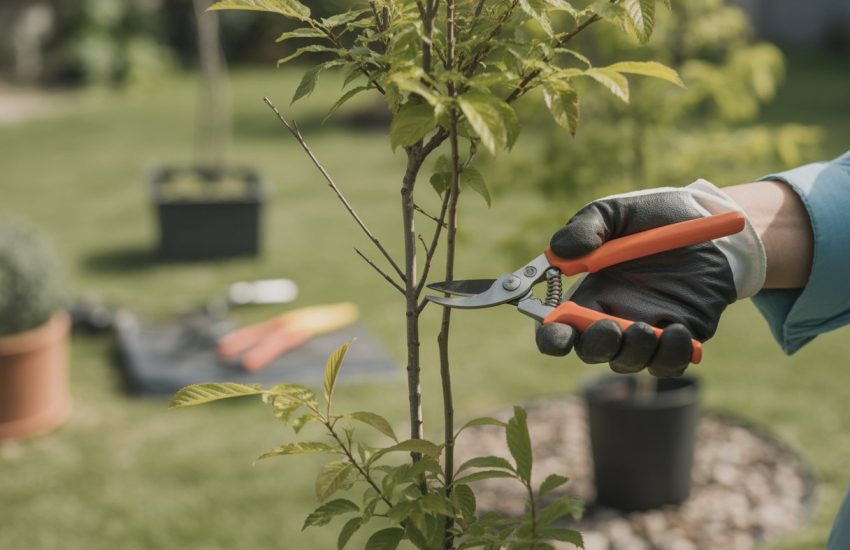Is Magnolia Good for Firewood – Burning Magnolia Wood
If you’re looking for the best possible firewood, magnolia wood isn’t it. While it can make a great starter wood, it’s not what you want for a prolonged burn. That’s because magnolia wood isn’t dense and burns extremely fast. As a result, you’ll have to replenish your wood supply much more frequently than if you were using a denser type of wood. In addition, magnolia wood tends to produce a lot of smoke and sparks, which can be dangerous if you’re not careful. For these reasons, magnolia wood is best suited for starting fires or use in small, controlled burns. Here is a detailed look at Magnolia as firewood.

Characteristics of Magnolia Trees
Magnolia trees are common in the southern United States, often used as ornamental plants. These stately trees can grow to a height of 60 feet or more, and their large, showy flowers make them a popular choice for landscaping. However, Magnolia trees are also prized for their wood, which is widely considered among the finest hardwoods. The wood is very strong and dense, making it ideal for furniture and flooring. It also has a beautiful grain pattern often used in decorative woodworking. If you are looking for Magnolia firewood, there are a few things to look for. The wood should have a deep reddish-brown color and a straight grain with few knots. The best way to find Magnolia firewood is to contact a local tree service or sawmill. They will usually have a good supply of this high-quality wood. While over 60 species of Magnolia are available, and nine are native to the United States, it is important to note that some varieties of this tree are protected and thus illegal to chop down. Thus, you must check with your local forestry service before deciding to use Magnolia for firewood.
Types of Magnolia Used for Firewood
1. Evergreen Magnolia
Evergreen magnolia is a type of magnolia native to the southeastern United States. The tree grows to 20-50 feet and has dark green, leathery leaves. This is the most common type of Magnolia and the mod widely used as fuel, as it has a higher BTU rating than others.
2. Cucumber Magnolia
Cucumber magnolia is a type of magnolia native to the eastern United States. The tree grows to 30-60 feet and has large, dark green leaves. The tree produces yellowish-green flowers that bloom in the spring. The cucumber magnolia is one of the largest Magnolia trees and tends to hold a lot of water. When used for firewood, it is best to ensure the wood is completely dry before burning.
3. Mountain Magnolia
Mountain magnolia is a type of magnolia native to the Appalachian Mountains. The tree grows to a height of 30-60 feet. The tree produces white or pink flowers that bloom in the spring. The tree is smaller when compared to other varieties, such as Mountain Magnolia, and tends to be more fragrant.
Seasoning Magnolia Firewood
Seasoning firewood is an important step in preparing it for use. The goal of seasoning is to remove the water content from the wood, which can help to prevent it from smoking or producing sparks when burned. There are a few different methods that can be used to season Magnolia firewood, but the most effective way is to split the logs and then stack them in a dry, well-ventilated place. The logs should be stored off the ground and protected from the elements, as this will help to keep them dry. Seasoning typically takes around six months, but it is important to check the wood periodically to ensure it is not starting to rot or develop mold. Once the firewood is properly seasoned, it will be ready to use and produce the best results.
Does it Spark?
If you’re looking for firewood that produces minimal sparks, magnolia is a great option. This hardwood is known for its dense grain, which helps to prevent flying embers. In addition, magnolia is relatively easy to split and stack, making it a convenient choice for campfires and bonfires. However, it’s important to note that magnolia burns hot and fast, so you’ll need to keep a close eye on the fire. But if you’re looking for firewood that’s easy to use and produces minimal sparks, magnolia is a great choice.
Does it Smoke?
When burned improperly, magnolia wood produces a great deal of smoke that can be irritating and dangerous. When burned properly, magnolia firewood produces minimal smoke that is neither strong nor problematic. In addition, magnolia wood has a very short burning span, so it does not create a lot of smoke. This makes Magnolia a good choice for people who are sensitive to smoke.
Creosote Buildup
Burning wood in a fireplace produces creosote, which is black or brown tar that builds up on the inside of the chimney. If too much creosote accumulates, it can catch fire, causing a hazardous and potentially destructive chimney fire. Magnolia wood produces less creosote than other types of wood when burned, making it a safer choice for use in fireplaces. In addition, Magnolia wood burns hot and clean, providing more heat and less smoke.
Resin/Sap Content
The resin and sap content of Magnolia firewood can vary depending on the tree species and the time of year it is harvested. However, Magnolia wood is relatively low in resin and sap. This makes it a good choice for use in fireplaces and wood-burning stoves, as it is less likely to produce sparks or unhealthy fumes. When burned, the resin helps to create a hot, long-lasting fire. In addition, the sap seeps out of the wood as it burns, giving off a pleasing aroma that many people enjoy.
Heat Output and Efficiency
The most efficient Magnolia trees are those that have a high BTU rating. BTU stands for British Thermal Units, a measure of the amount of heat required to raise the temperature of one pound of water by one degree Fahrenheit. The higher the BTU rating, the more efficient the tree is at converting heat into energy. The Evergreen Magnolia has a heat output of 21.6 million BTU per cord, while the Cucumber Magnolia has a heat output of only 18.6 million BTU per cord. The Alligator magnolia is somewhere between, with a heat output of 19.6 million BTU per cord. When choosing a tree for wood heat, it is important to consider the specific needs of your home. If you need a lot of heat, a tree with a high heat output, like the Evergreen Magnolia, may be the best choice.
Pros
- Magnolia is easy to split
Another advantage of using magnolia for firewood is that it is easy to split. This is important because it means you can get your fire going quickly and easily. Magnolia is also easy to stack, meaning that you will be able to store it easily.
- Magnolia is Dense
Magnolia is also a very dense wood, which means it produces more heat per pound than other types of wood. This makes it an efficient choice for those who want to get the most bang for their buck when it comes to firewood.
- Good Resin Content
In addition to being dense and hard, Magnolia is also very resinous. This means that it produces more sparks than other types of wood, making it perfect for fireplace or fire pit use.
- Good Aroma
Magnolia wood is also known for its unique aroma. Magnolia emits a sweet, floral scent that many people find pleasant and relaxing when burned.
- Sustainable
Last but not least, Magnolia is an eco-friendly choice for firewood. Because it is a hardwood, it takes longer to decompose than softer woods like pine or cedar. This means that it can last for long without decomposing contributing less to deforestation and helping preserve our forests for future generations.
Cons
- Magnolia burns faster
One of the primary disadvantages of using Magnolia for firewood is that it has a short burning span. Magnolias are not as dense as other hardwoods, and as a result, they burn more quickly and produce less heat.
- Magnolia has a high moisture content
Another disadvantage of using Magnolia for firewood is that it has a high moisture content. This means that it will take longer for the wood to dry out and be ready to burn. Wet wood also produces less heat than dry wood, and it can produce more smoke.
Bottom Line
Even though Magnolia is not the best firewood to use provides a good alternative due to its availability. For example, if you live in an area with few trees and need to build a fire, Magnolia is a good option. The wood is fast burning but also generates a lot of heat in this period. However, it is important to note that Magnolia does not produce as much heat as other types of wood, so it is not the best choice for cooking or heating purposes. In addition, Magnolia can be difficult to light, so it is important to have patience when using this type of wood. Magnolia is not the ideal firewood, but it can be a good option if other types of wood are unavailable.


